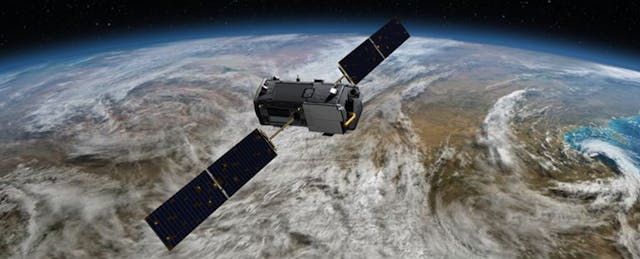At South Miami Middle Community School, our mission is to improve upon students’ abilities to read, write, comprehend, and articulate through an integrated curriculum, which will prepare all students for the diversely multicultural and technological world of the twenty-first century. But one question in particular has come up again and again—how do we turn students into responsible data consumers, and show them how to use data for good?
Take a look inside my Honors Science classes. The “Exploring Climate Change project” provides opportunities for students to apply knowledge to real life situations. The project’s major theme is global awareness, in which students began to understand global issues in order to take environmental action. Students begin to demonstrate a knowledge and understanding of the environment circumstances and conditions affecting it, particularly as it relates to air, climate, land, food, energy, water and ecosystems.
But it’s not just about content—it's about students being to make judgments and decisions based on real data, not inferences. This project allows students to critically think through effective reasoning skills and systems thinking (seeing the Earth as a whole construct). Students acquire skills in computer technology, instrument interfacing, and data interpretation during the project, while also partaking in effective critical thinking, problem solving, and decision-making.
Project-based learning offers a unique opportunity to hand the data reins to students—provided you have the right parameters. Let’s take a look inside my classroom to see how one project does it.
Pre-Planning and Designing the Environment
Climate change has been written and talked about so much that even scientists have trouble understanding all the issues. To make the ideas more tangible for students, I intentionally designed the learning environment to be a blended learning model in which the traditional classroom would be enhanced with online materials and tools.
While I wanted my students to pay closer attention to the knowledge, skills, attitudes and beliefs that they bring with them to the classroom, and relate it to their own concept of climate change, it was also important that the project be supported by real tools and data. I knew that by using tablets, students could download satellite images to study indicators of climate change—a qualitative measure. But where would these images come from?
Using the Right Tools and Data
The initial outcome of using two tools in particular—Eyes in the Sky and ImageJ—was tech and skill-based; students generated research culminating in multimedia presentations, learned to access the Internet as individuals and in groups in order to generate their reports, and communicated in a professional and creative manner while being challenged to solve real-life environmental issues. As time went on, students also learned how to access and manipulate data. In reporting the outcome of their research, students needed to state what they have learned (claim), use their findings (evidence) to evaluate and explain their findings (reason).
Ultimately, I wanted students to write a report based on indicators of climate change that they observed. We used Eyes in the Sky-satellite image data from the NASA NEO site, and the National Institutes of Health’s ImageJ software to track satellite images from various indicators, such as Sea Surface Temperature and Ice and Snow Cover.
To track climate change over time, my students selected satellite images monthly. Using Image J, the students then created a montage of their images, animated them so the images changed as “time” passed, and made observations. From these individual student reports, student discussed their findings with each other. These teams of students then synthesized their observed information and compared their findings to actual research (see video example below).
Growing the Project Beyond One Classroom
Perhaps the biggest impact the Exploring Climate Change project had on student lives was how it grew outside of the classroom and into an outreach program called “Surviving the Effects of Climate Change.”
Our initial project led a few students to conduct research beginning in the summer of 2013. Working with University of Miami professors and scientists, the students decided to measure the “Heat Island Effect” of South Florida, right in their own backyard. Students formulated a hypothesis that large cities with concrete, black roads and little vegetation create their own reflective heat into the atmosphere, their own little island of heat. Using continuous recording data collectors, sensors and time-lapse cameras, students gathered lots of data from various areas in the city.
But it didn’t stop there. The students continued their research throughout the year and developed science fair projects upon returning to school. One project eventually was transformed into a research manuscript and was published by the Harvard Journal of Emerging Young Investigators, entitled Is Cloud Cover One of the Effects of Climate Change?
Climate change is such an enigma without clearly define data parameters, hence my desire to have students investigate and discover for themselves changes in the global environment. By choosing an indicator, students were able to gather satellite data, animate it, research specific areas observed based on their indicators, and more—all on their own, and all with using some of the same technologies that adults use.
Since the use of geospatial images has become a major national vehicle for the study of global change, I believe that it is important that an understanding be developed in young people. They are our future citizens—and that is something that all teachers must remember. Educators, look to ways to connect classroom teaching with real-world implications. This project was a good way to introduce students their purpose within today’s society—but there are many more project ideas out there that can do the same.


